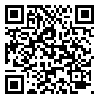BibTeX | RIS | EndNote | Medlars | ProCite | Reference Manager | RefWorks
Send citation to:
URL: http://tumj.tums.ac.ir/article-1-697-en.html
Background: Oocyte donation and assisted reproductive technology (ART) give women with ovarian failure, advanced reproductive age, inheritable disorders or recurrent implantation failure, the ability to conceive. The success of oocyte donation is reportedly influenced by multiple parameters of the oocyte donor and recipient. The objective of this study was to evaluate the donor and recipient variables affecting the outcome of oocyte donation.
Methods: In this retrospective study, we analyzed 51 oocyte donation cycles of 45 women in an in vitro fertilization clinic. Data collected included age, body mass index, endomet-rial thickness, cycling and gravidity of recipients and the age of donors.
Results: The clinical pregnancy rate was 40% per recipient and 35% per cycle resulting in 9 singleton, 7 twin and 2 triplet gestations. Embryo implantation rate was 27%. Oocyte fertilization rates among patients who had become impregnated and those who had not were 75% and 79%, respectively of 18 pregnancies, 15 culminated in a live birth (33% live birth rate). There was no significant relationship between incidence of pregnancy and mean age, BMI, gravidity, cyclicity of recipients and age of donors. There was a significant difference between the endometrial thickness of patients who became pregnant and those who did not (p=0.048). The number of transferred embryos was positively associated with pregnancy (p=0.006).
Conclusion: The factor that most reliably predicts the outcome of oocyte donation cycles is oocyte recipient endometrial thickness. Donor age from 20-34 years dose not affect clinical pregnancy rates. Donors in their early 30's are considered to be the best candidates for oocyte donation.
| Rights and permissions | |
 |
This work is licensed under a Creative Commons Attribution-NonCommercial 4.0 International License. |





